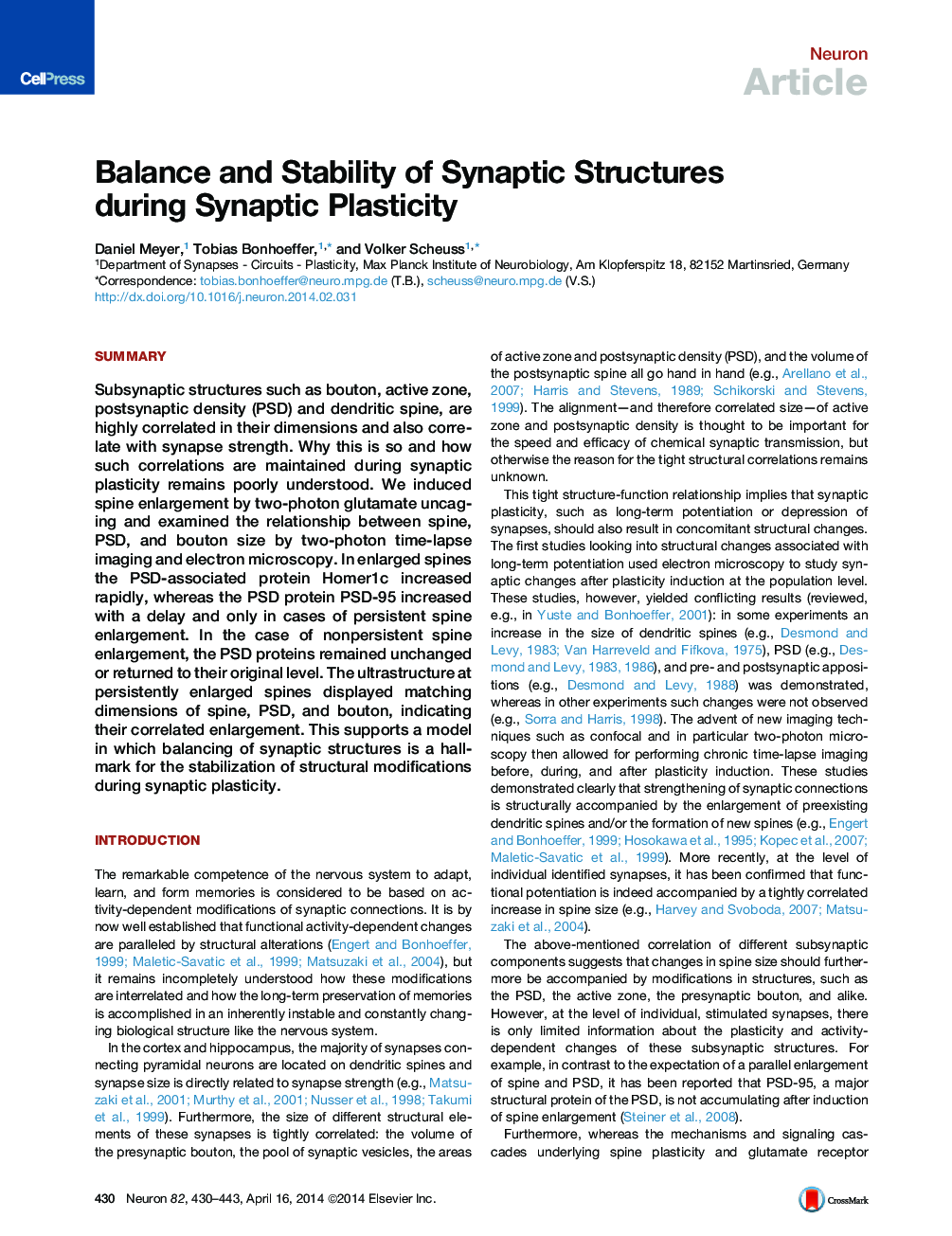| Article ID | Journal | Published Year | Pages | File Type |
|---|---|---|---|---|
| 4321139 | Neuron | 2014 | 14 Pages |
•Spine, PSD, and bouton increase in concert after local glutamate application•The amount of Homer1c increases within 20 min of spine enlargement•The amount of PSD-95 increases after 80 min only in spines with stable enlargement•The correlation in spine, PSD, and bouton size is a signature of synapse stability
SummarySubsynaptic structures such as bouton, active zone, postsynaptic density (PSD) and dendritic spine, are highly correlated in their dimensions and also correlate with synapse strength. Why this is so and how such correlations are maintained during synaptic plasticity remains poorly understood. We induced spine enlargement by two-photon glutamate uncaging and examined the relationship between spine, PSD, and bouton size by two-photon time-lapse imaging and electron microscopy. In enlarged spines the PSD-associated protein Homer1c increased rapidly, whereas the PSD protein PSD-95 increased with a delay and only in cases of persistent spine enlargement. In the case of nonpersistent spine enlargement, the PSD proteins remained unchanged or returned to their original level. The ultrastructure at persistently enlarged spines displayed matching dimensions of spine, PSD, and bouton, indicating their correlated enlargement. This supports a model in which balancing of synaptic structures is a hallmark for the stabilization of structural modifications during synaptic plasticity.
